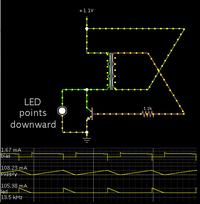marianodanilo
Junior Member level 2

hello another question,,I have a working JT,,but when I'm measuring the CE voltage (using DMM) with or without LED, I can only measure above 0.8V..I know my JT is working because it can light up my LED with source voltage of above 1.1V.. how can I measure the output voltage correctly..


